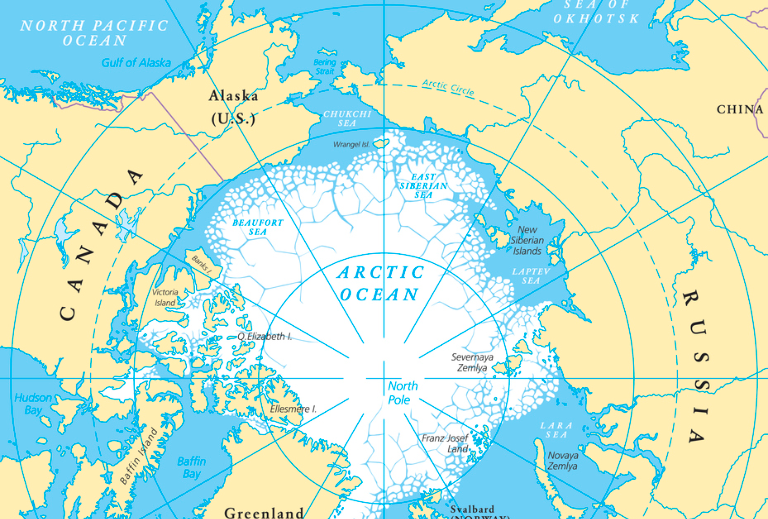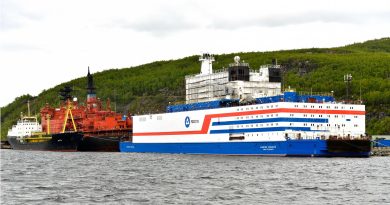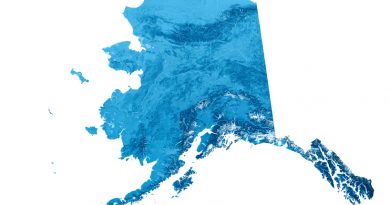Blog: The US is using a mine in Greenland to counter China

The U.S. has offered $657 million to develop the world’s northernmost mine in Greenland to counter China. Is it worth it?
In a remote fjord in northwest Greenland, an Australian company is scouting beneath a permafrost-laden beach for zinc. The price of the silvery element, which is used to galvanize other metals to prevent rusting, has doubled since March 2010 to nearly $2 a pound in March 2022 following Russia’s invasion of Ukraine. As a result, remote deposits of the commodity are now even more lucrative than they were 15 years ago, when Ironbark Zinc was formed in Perth, one of the world’s most remote cities, to tap resources in an extreme frontier. Located at 83°N, just 750 kilometers from the North Pole, the Citronen Zinc-Lead project was forecast in late 2021 to generate $1.46 billion in revenue with zinc at $1.30 per pound. With the metal now close to $2 per pound, the mine would generate over $2 billion if prices hold over the mine’s estimated 20-year lifetime.
The Citronen Fjord lies within the Lower Palaeozoic and Neoproterozoic basins, which formed ~500 million to 1 billion years ago (geological map of Greenland). While the location’s deposits were originally discovered by Platinova A/S, a Canadian company, in 1993, only now are the forces necessary for their exploitation coming together. The project could land in the world’s top ten list of zinc producers if it is successfully developed. Consequently, its value – both monetary and, perhaps more importantly, strategic – has caught the attention of the US Export-Import Bank (EXIM), which was established during the Great Depression to support American exporters and economic interests.
The U.S. has offered $657 million to develop the world’s northernmost mine in Greenland to counter China. Is it worth it?
IIn a remote fjord in northwest Greenland, an Australian company is scouting beneath a permafrost-laden beach for zinc. The price of the silvery element, which is used to galvanize other metals to prevent rusting, has doubled since March 2010 to nearly $2 a pound in March 2022 following Russia’s invasion of Ukraine. As a result, remote deposits of the commodity are now even more lucrative than they were 15 years ago, when Ironbark Zinc was formed in Perth, one of the world’s most remote cities, to tap resources in an extreme frontier. Located at 83°N, just 750 kilometers from the North Pole, the Citronen Zinc-Lead project was forecast in late 2021 to generate $1.46 billion in revenue with zinc at $1.30 per pound. With the metal now close to $2 per pound, the mine would generate over $2 billion if prices hold over the mine’s estimated 20-year lifetime.
The Citronen Fjord lies within the Lower Palaeozoic and Neoproterozoic basins, which formed ~500 million to 1 billion years ago (geological map of Greenland). While the location’s deposits were originally discovered by Platinova A/S, a Canadian company, in 1993, only now are the forces necessary for their exploitation coming together. The project could land in the world’s top ten list of zinc producers if it is successfully developed. Consequently, its value – both monetary and, perhaps more importantly, strategic – has caught the attention of the US Export-Import Bank (EXIM), which was established during the Great Depression to support American exporters and economic interests.
Banking against China
During the Trump administration, the US EXIM Bank’s 2019 Congressional reauthorization directed it to establish a “Program on China and Transformational Exports.” The effort seeks to extend loans, guarantees, and insurances at rates “fully competitive” with those established by the People’s Republic of China. The program particularly aims to maintain U.S. leadership in ten areas: AI, biotech, biomedicine, wireless communications, quantum computing, renewable energy, semiconductors, high performance computing, fintech, and water treatment and sanitation.
While mining isn’t listed, zinc constitutes an important element in many of these sectors. The metal was also deemed a “critical element” by the U.S. Geological Survey in 2015, reflecting growing risks to the supply chain as 87% of the country’s imports as of 2019 come from abroad. The main sources – Canada, Mexico, Australia, and Peru – are all largely seen as reliable. Adding another “geopolitically stable” supplier such as Greenland would make the zinc commodity chain more resilient yet. China, too, has been ramping up production and smelting of zinc in recent years, with mines from Guangdong in the south to Inner Mongolia in the north. Now the world’s largest producer of zinc, producing some 46% of resources, China is seen as threatening the U.S.
Ironbark’s previous partnerships with China
In fact, in 2013 and 2014, Ironbark signed non-binding agreements with China Nonferrous Metal Mining (Group) Company, a state-owned mining enterprise, to help finance, build, and partly own the mine. Yet little is mentioned about them now. In a story similar to the Greenland airport fiasco in 2018, when the Pentagon pressured the Danish government into funding airport construction and renovations rather than allow China to do so, Ironbark’s MOUs with China Nonferrous seem to have been replaced by a rather unlikely investor from the U.S. itself.
China exits stage left; the U.S. enters
Enter EXIM Bank. In late 2021, Citronen Zinc-Lead Project became the “first funding application of any kind globally” to receive a standalone 402(A) designation from EXIM Bank under its China and Transformational Exports Program (CTEP).” This means that Ironbark Zinc may be eligible for extended repayment tenors, extended drawdowns, and reduced fees. Upon the announcement of the special designation, Ironbark’s managing director, Michael Jardine, stated, “The strategic importance of Ironbark’s Citronen Zinc Project to US interests is implicit in today’s world first confirmation of 402(A) eligibility.”
In December 2021, the US EXIM Bank preliminarily approved up to $657 million in debt funding. If secured, this would be a massive boon for the Australian Stock Exchange-listed corporation, which had a mere $4.15 million in the bank as of March 2022 for the Citronen project, according to the most recent quarterly report. In fact, the amount would, according to the report, “likely provide all required project debt.”
Representatives of the US EXIM bank are planning a site visit to Citronen in July 2022. Four drill rigs are already there, ready to commence additional exploration. While the size of the current camp is unclear, photos from POLOG, a Danish logistical services company, reveal a sizable exploration camp in 2007 and a goal of establishing a permanent, year-round camp housing 40 people.
The world’s northernmost mine—and northernmost waste rock
Ironbark Zinc estimates that the Citronen site holds 84.7 million tons of mineral resources, 4.7% of which are zinc. Inevitably, a large amount of waste rock will be produced, which is a major problem facing the zinc mining industry. A blueprint (third image in Tweet below) suggests that the waste rock will be stored within the fjord. At 940 kilometers from the nearest settlement, any necessary cleanup and recovery will require incredibly expensive, remote operations. The world’s largest producer of zinc, Red Dog Mine in northwest Alaska, may be one very toxic indicator of what may take eventually take place in Citronen Fjord, which is even more inaccessible. Complicating matters, both mining sites in Greenland and Alaska sit atop permafrost, which is highly vulnerable to climate change.
.@IronbarkZincASX has announced an MOU with #LeonhardNilsenandSønner (LNS) regarding a possible equity investment in, & construction/mining #contractor services for, the 130,000 t/y #zinc, 20 year minelife #Citronen project in northern #Greenland https://t.co/DSl3QKCofc pic.twitter.com/Vg1GDm8Qbc
— International Mining (@im_mining) May 23, 2022
The challenges of monitoring Citronen Fjord
Citronen Fjord’s remoteness hampers citizen monitoring of what may become the world’s northernmost mine. This is true not only on the ground, but from space, too. Located at 83°N, the project sits beyond the view of many Earth-observing satellites. Freely available Landsat imagery from the U.S. Geological Survey normally covers the Earth to 82°N—one degree below Citronen Fjord—though it the site does sneak into some of the available imagery, however coarse (30-meter-resolution). The location is excluded from high-resolution imagery typically available from Google Maps, Google Earth Pro, and Bing. However, Citronen Fjord can be seen in Maxar’s high-resolution imagery for a fee, as previewed by the images below. This is all the more reason to suggest that in the world’s most remote regions, where ensuring transparency of operations and monitoring is crucial, commercial satellite firms which hold an exclusive view over such sites should make their imagery freely available.
Northern profits: Draining to the southern hemisphere
If the mine is developed, waste rock is guaranteed to pile up in a fjord previously dammed only by ice. In contrast, most of the revenues will evaporate to the opposite side of the planet at Ironbark’s headquarters in Perth. Mining companies adore Greenland because the country “ticks all the boxes,” in the words of Greenfields, a Canadian exploration company. The capital of Greenland, Nuuk, does not impose rents or rates for mineral licenses, offers a mineral royalty rate for zinc of just 2.5% (half that of places like Western Australia for similar metals), and allows deductions for corporate income and dividend taxes, again unlike Western Australia.
Ironbark candidly underscores the geostrategic benefits of the mine and its desire to “increase shareholder value by advancing the development of the Citronen Zinc Project.” Among the company’s shareholders are Belgian, Anglo-Swiss, and Australian mining corporations, the company’s CEO (previously involved in coal and gold extraction), and, seemingly, a catering company. These are the organizations and individuals who will stand to profit directly from American taxpayers if they fork over two-thirds of a billion dollars to ostensibly counter China.
Ironbark Zinc’s Top Shareholders
| % Ownership | Shareholder | Shares | Current Value |
| 9.33% | Pearyland Royalties Co. Limited | 122,000,000 | A$2.6 million |
| 7.47% | Nyrstar NV | 97,690,702 | A$2.1 million |
| 6.77% | Toronga | 88,500,000 | A$1.9 million |
| 3.37% | Glencore | 44,110,593 | A$926,000 |
| 2.2% | Dulyne Pty Ltd | 28,700,000 | A$602,700 |
| 2.13% | Ram Kangatharan | 27,830,000 | A$584,400 |
| 1.48% | Michael Jardine-Hargrave | 19,395,826 | A$407,300 |
| 1.15% | Show Caterers Pty Ltd | 15,000,000 | A$315,000 |
If a fjord is destroyed, will China blink?
Ironbark has said little about serving Greenlandic communities. This is unsurprising, for the nearest local person who could be hired is almost a thousand kilometers away. The country’s population will instead have to contend with the destruction of a remote fjord, which is likely prime polar bear habitat.
The U.S. effort to push back against Beijing is extending all the way to the top of the planet, with potentially irreparable damage and huge costs. Is all this worth it when China probably won’t even flinch?
Previous writing on Citronen Fjord: Greenland isn’t for sale, but it is for lease
This post first appeared on Cryopolitics, an Arctic News and Analysis blog.
Related stories from around the North:
Canada: Canadian government rejects Arctic mine’s request for emergency order, CBC News
Finland: Miners hunting for metals to battery cars threaten Finland’s Sámi reindeer herders’ homeland, The Independent Barents Observer
Lapland: The Arctic Railway – Building a future or destroying a culture?, Eye on the Arctic
Norway: Significant metals discovery in key reindeer herding land in Norway, The Independent Barents Observer
Sweden: UN experts call on Sweden to halt mining project on Indigenous Sami land, Eye on the Arctic





I think it would be a amazing outcome for Greenland to develop this mine. Greenland really needs to start making opportunities for it’s population and stop relying on charity from Denmark.